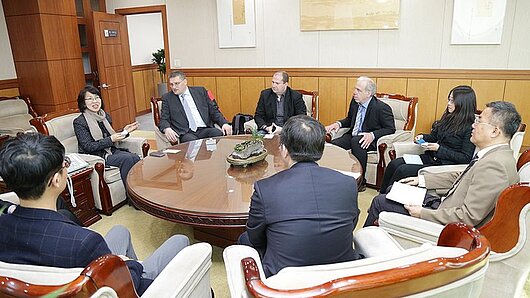High-Performance Computing Center Stuttgart

One specific topic of collaboration the institutes plan to pursue involves developing new tools that could be used in digital product design and fabrication. Researchers at KISTI have been developing a technology for these purposes called HEMOS-Fluid. HEMOS (which stands for High Performance Engineering Modeling & Simulation) is a software platform designed to support fluid analysis, particularly in the large-scale post-processing of simulation data for large data displays and desktop monitors.
At the meeting, the institutes agreed to explore how HEMOS-Fluid might be combined with COVISE (Collaborative Visualization and Simulation Environment), a technology developed at HLRS. COVISE is an extendable, distributed software environment that seamlessly integrates simulation results, postprocessing, and visualization.
Ultimately, Dr. Heeyoon and Dr. Resch anticipate that combining these two technologies could offer a powerful new approach for visualizing simulation data. Pooling their institutes' expertise and strengthening mutual collaboration on this topic, they also stated, could ultimately benefit the competitiveness of small- and medium-scale enterprises (SMEs) that use simulation in their product design and development.
— Christopher Williams